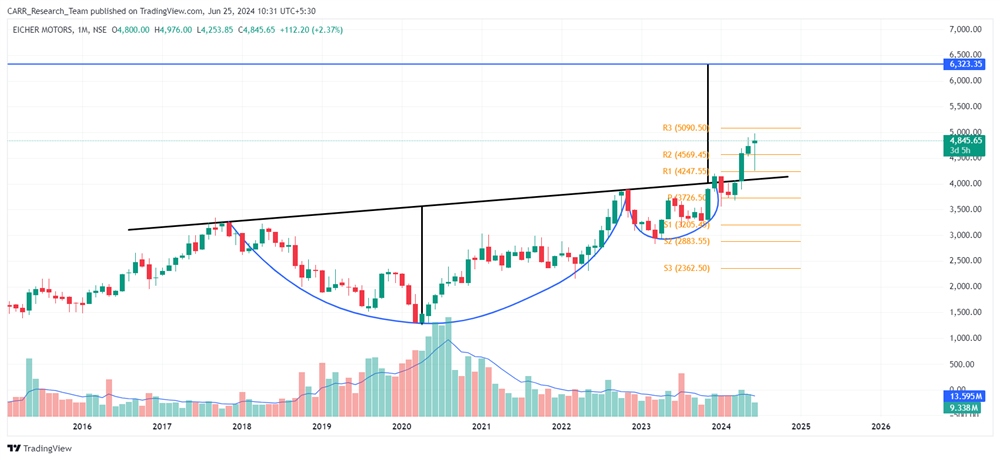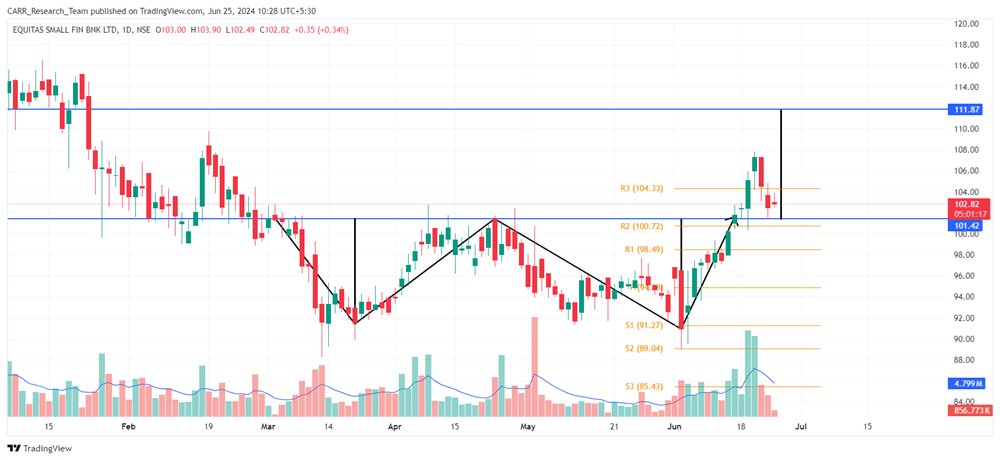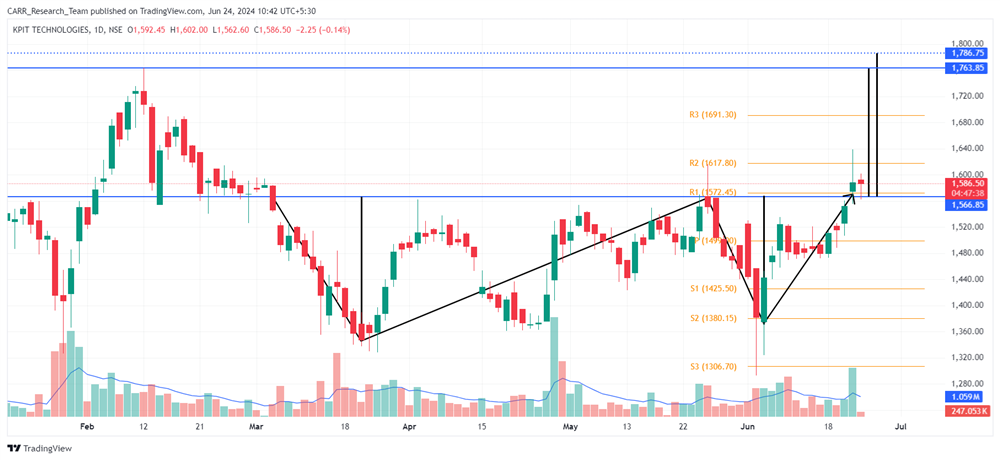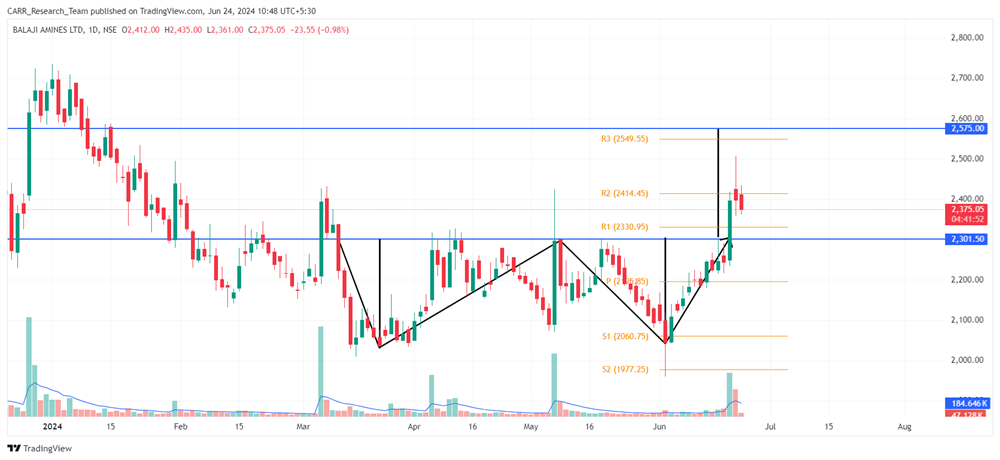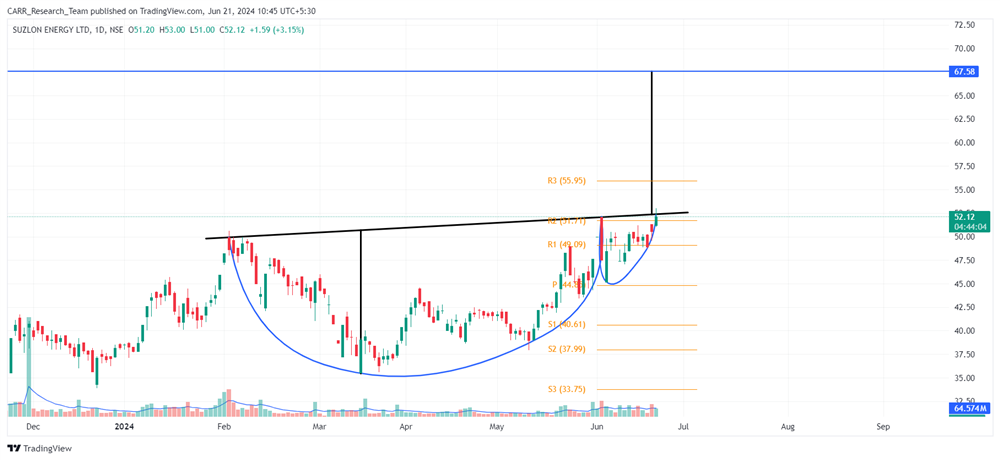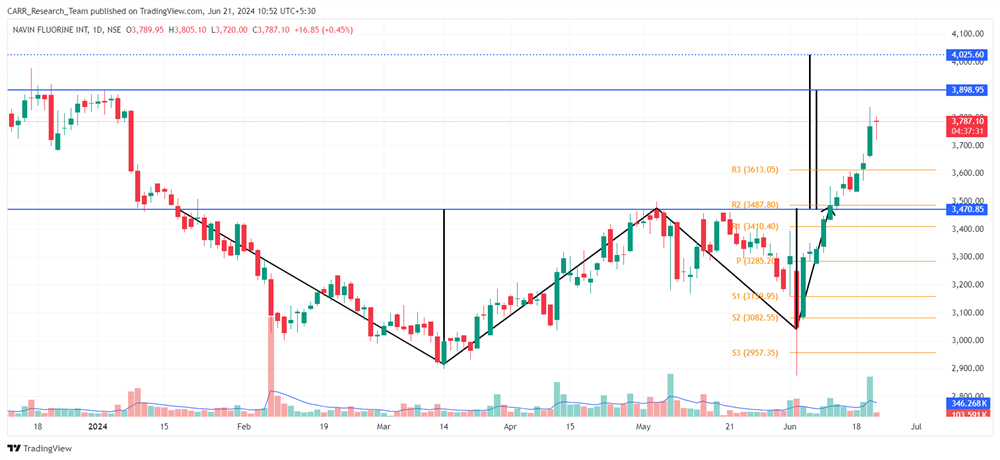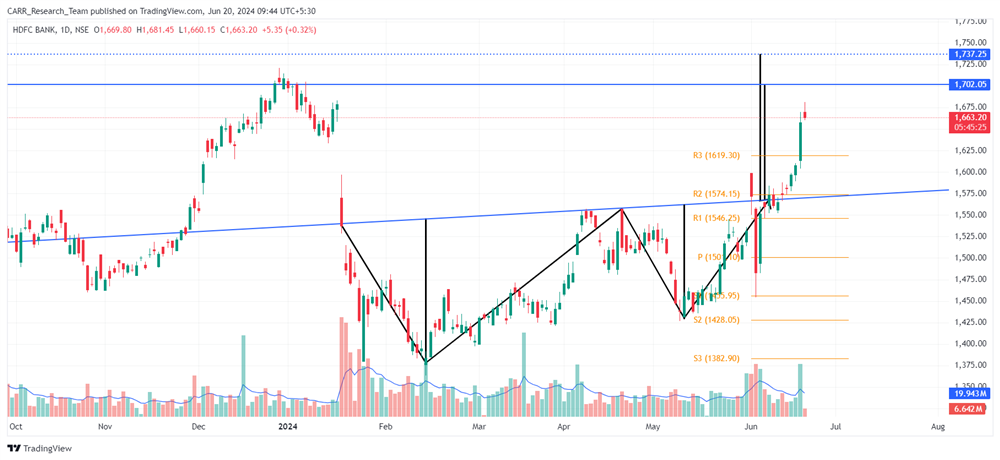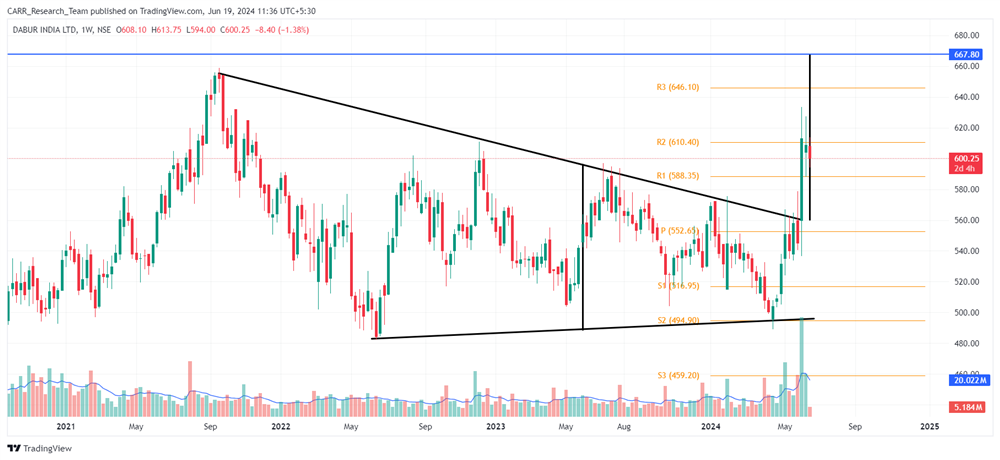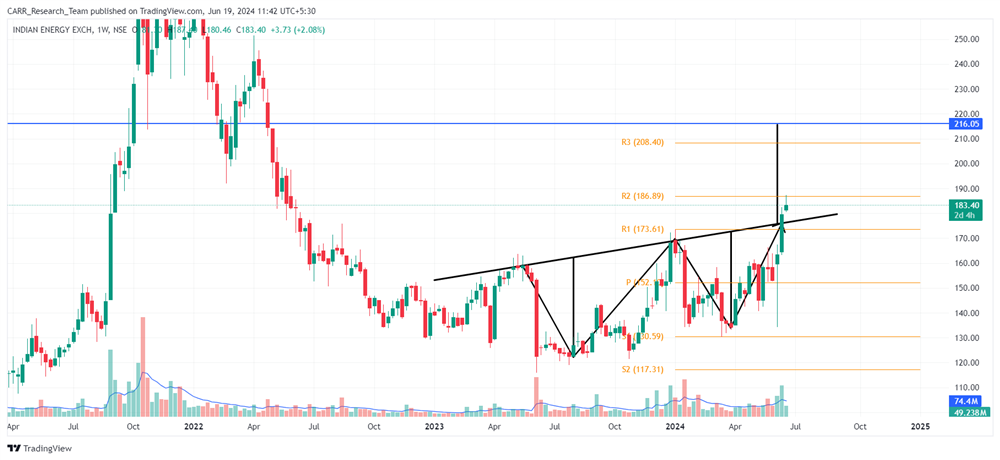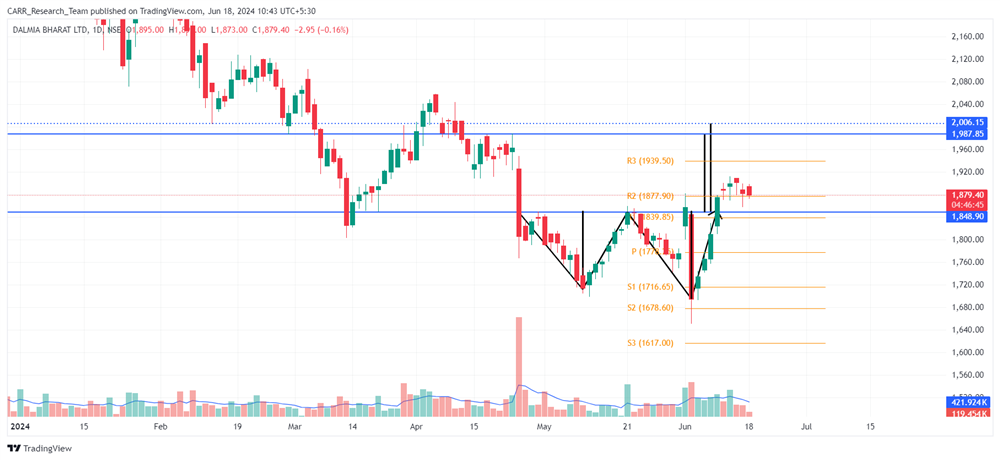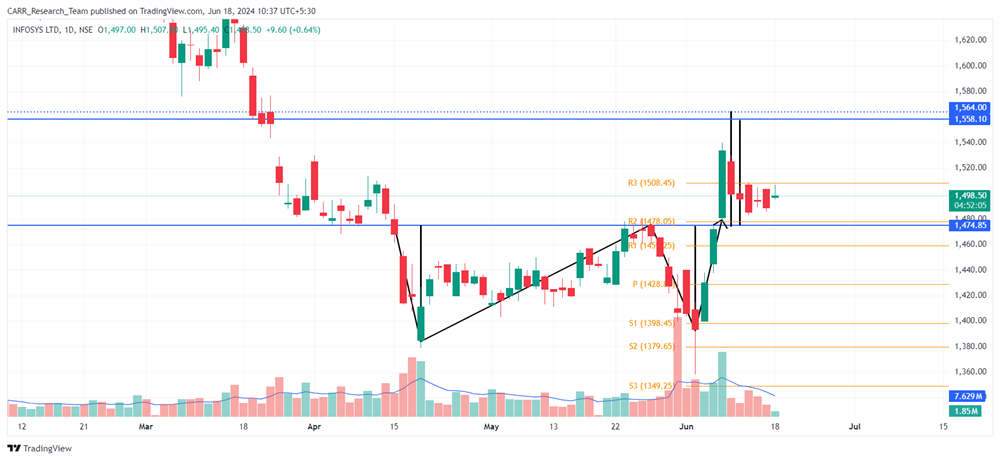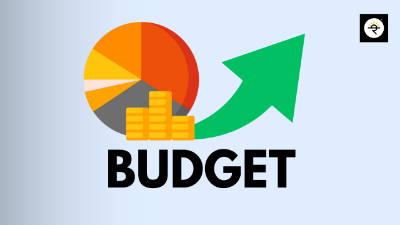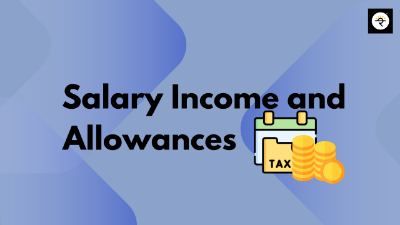Stock name: Shree Cement Ltd.
Pattern: Triple bottom pattern and retest
Time frame: Daily
Observation:
The stock has been declining since February 2024 and formed a triple bottom pattern on the daily chart. It broke out from this pattern on June 10, 2024, supported by a bullish MACD and above-average trading volume. After the breakout, the stock retested the breakout level. The RSI is currently in a favourable zone. Technical analysis suggests that if the stock rebounds from the retest, it may move further upwards.
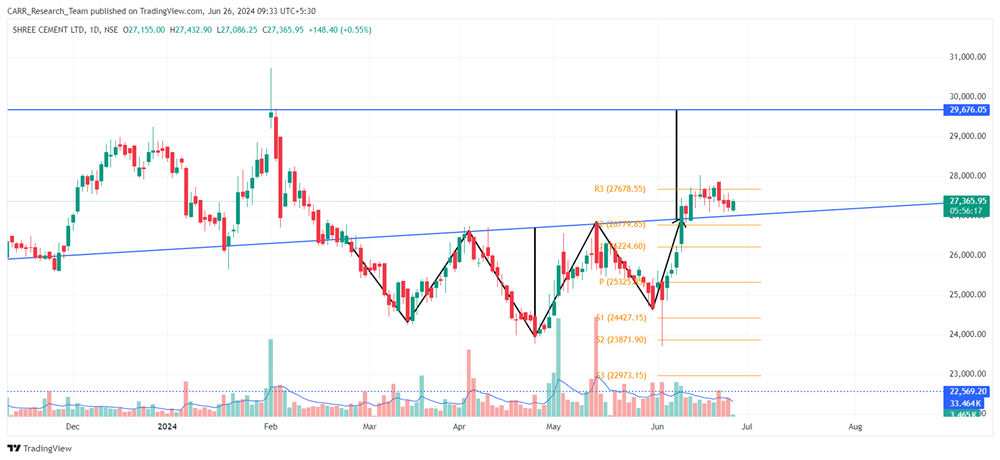
You may add this to your watch list to understand further price action.
Disclaimer: This analysis is purely for educational purpose and does not contain any recommendation. Please consult your financial advisor before taking any financial decision.

Stock name: Sterlite Technologies Ltd.
Pattern: Double bottom pattern
Time frame: Daily
Observation:
The stock has been declining since 2021. Recently, from February to June 2024, it stabilized and formed a double bottom pattern on the daily chart. On June 25, 2024, it closed above the neckline but has yet to see a proper breakout. The RSI is currently in a favourable zone. Technical analysis suggests that a significant breakout may lead to further upward movement.
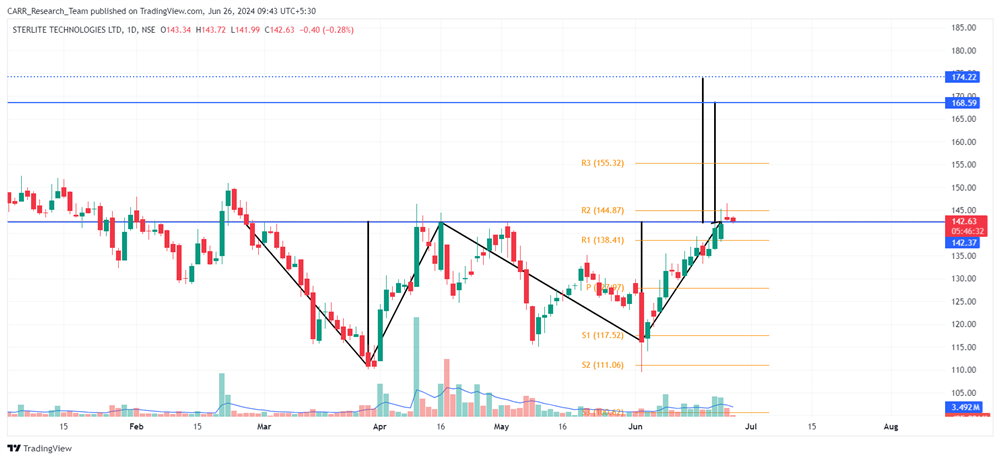
You may add this to your watch list to understand further price action.
Disclaimer: This analysis is purely for educational purpose and does not contain any recommendation. Please consult your financial advisor before taking any financial decision.
News for the day:
- Textiles Minister Giriraj Singh announced the approval of a production-linked incentive (PLI) scheme worth over Rs 10,000 crore for the textiles industry, with potential plans to extend it to the garments sector. Speaking at the India International Garment Fair, Singh emphasized the ministry's goal to surpass China in the textile sector and urged the industry to target $50 billion in exports in the coming years. In 2021, the government had approved a ₹10,683 crore PLI scheme for five years to boost the production of man-made fibre apparel, fabrics, and technical textiles products.
- Punjab & Sind Bank has signed an agreement with the Indian Army to provide a tailored salary account, PSB Gaurav Bachat SB, for serving and retired personnel, including Agniveers under the Agnipath scheme. The MoU offers benefits like personal accident insurance up to Rs 1 crore and air accident insurance up to Rs 1.2 crore. The bank also introduced the PSB Pink debit card for women and demat services through Fisdom. Additionally, it partnered with Maruti Suzuki India for vehicle loans and IIM Amritsar for academic collaboration. The bank launched the PSB UNiC App for enhanced digital banking services.
- Adani Enterprises plans to invest $21 billion (₹1.75 lakh crore) in its airport business over the next decade, according to group CFO Jugeshinder Singh. This investment will be managed by Adani Airport Holdings, a wholly owned subsidiary that operates seven airports: Mumbai, Lucknow, Ahmedabad, Jaipur, Guwahati, Thiruvananthapuram, and Mangalore. The first phase of city-side development has commenced on 98 acres at the Mumbai, Ahmedabad, Jaipur, Lucknow, and Guwahati airports.


